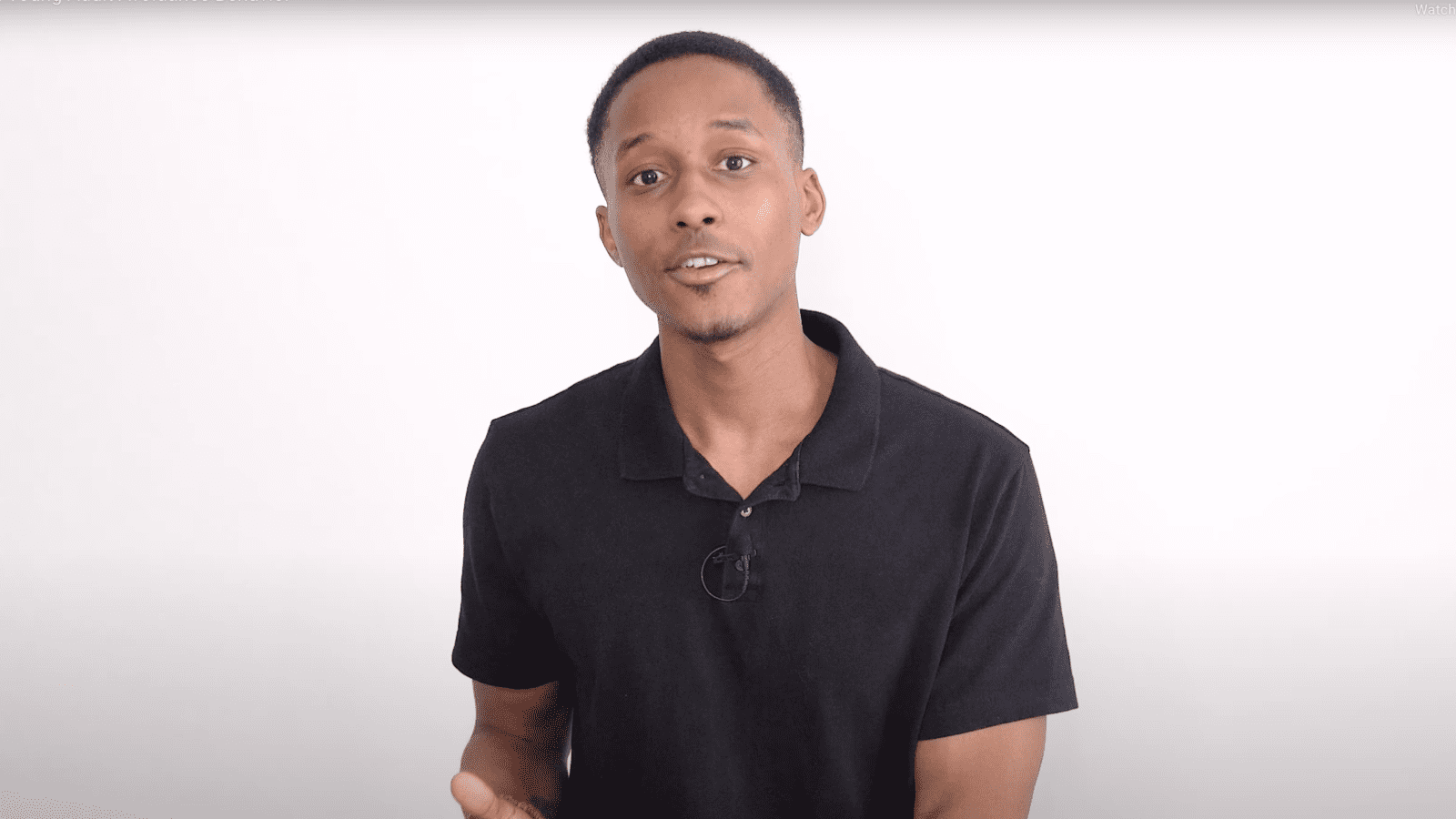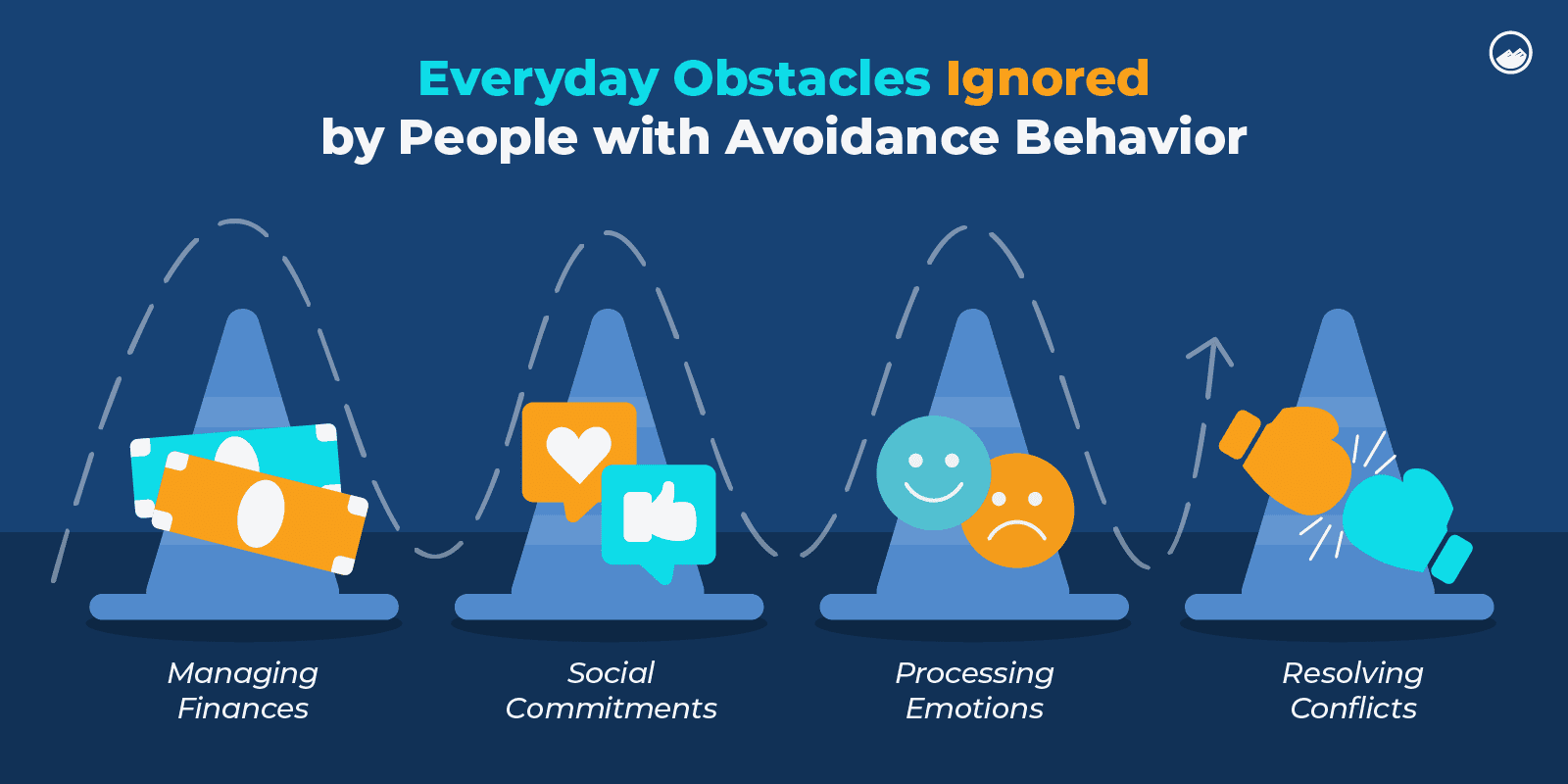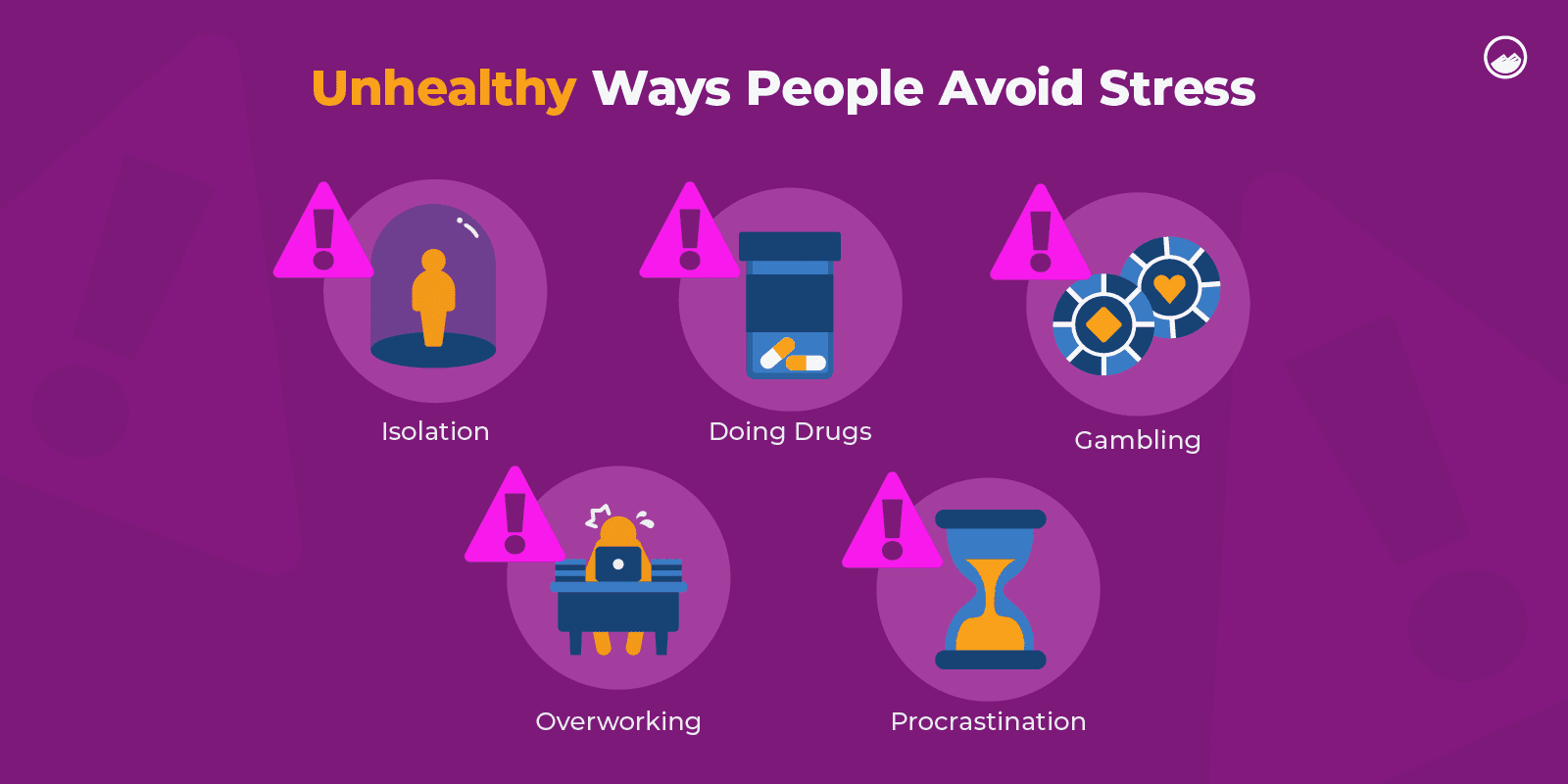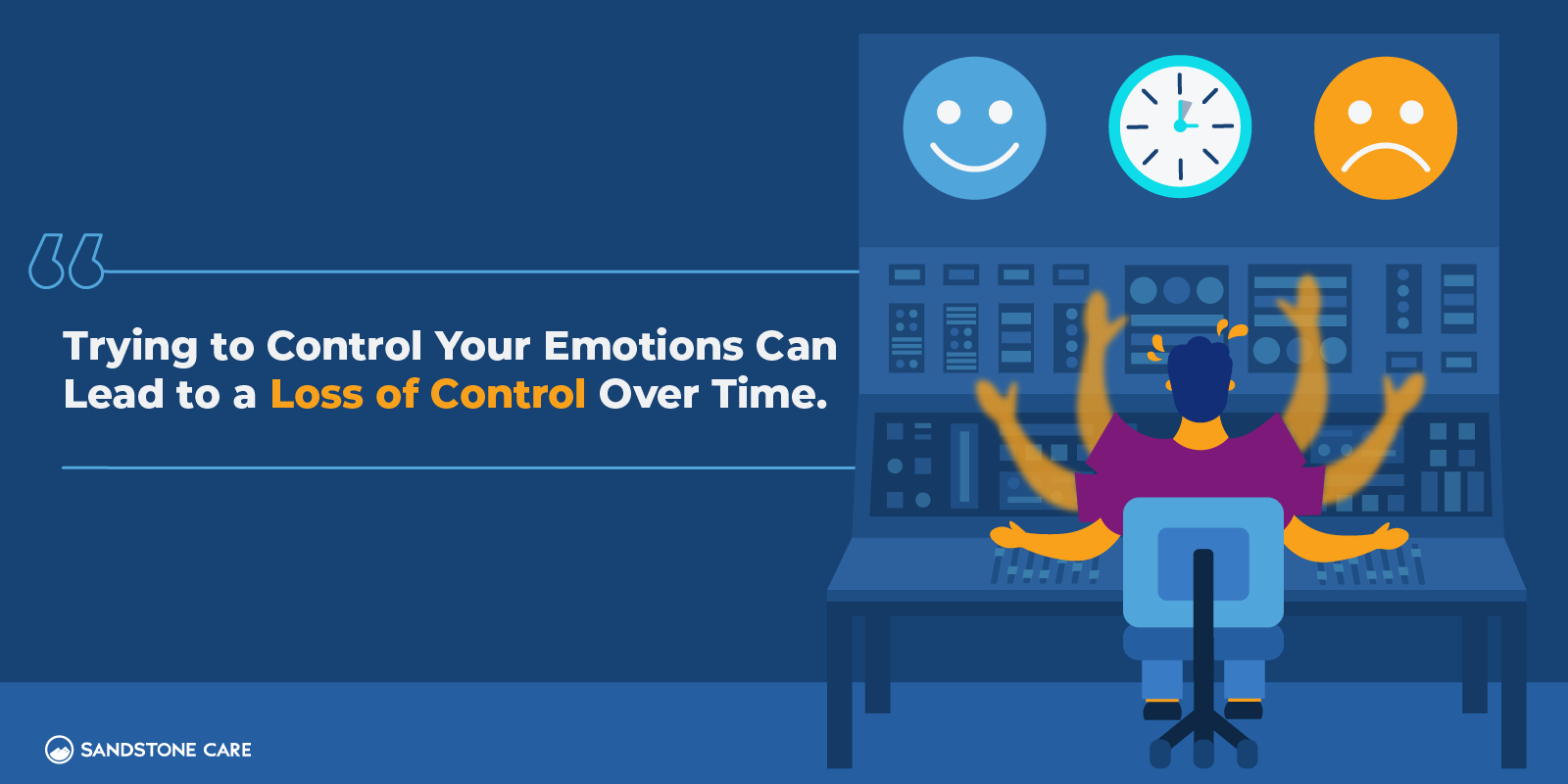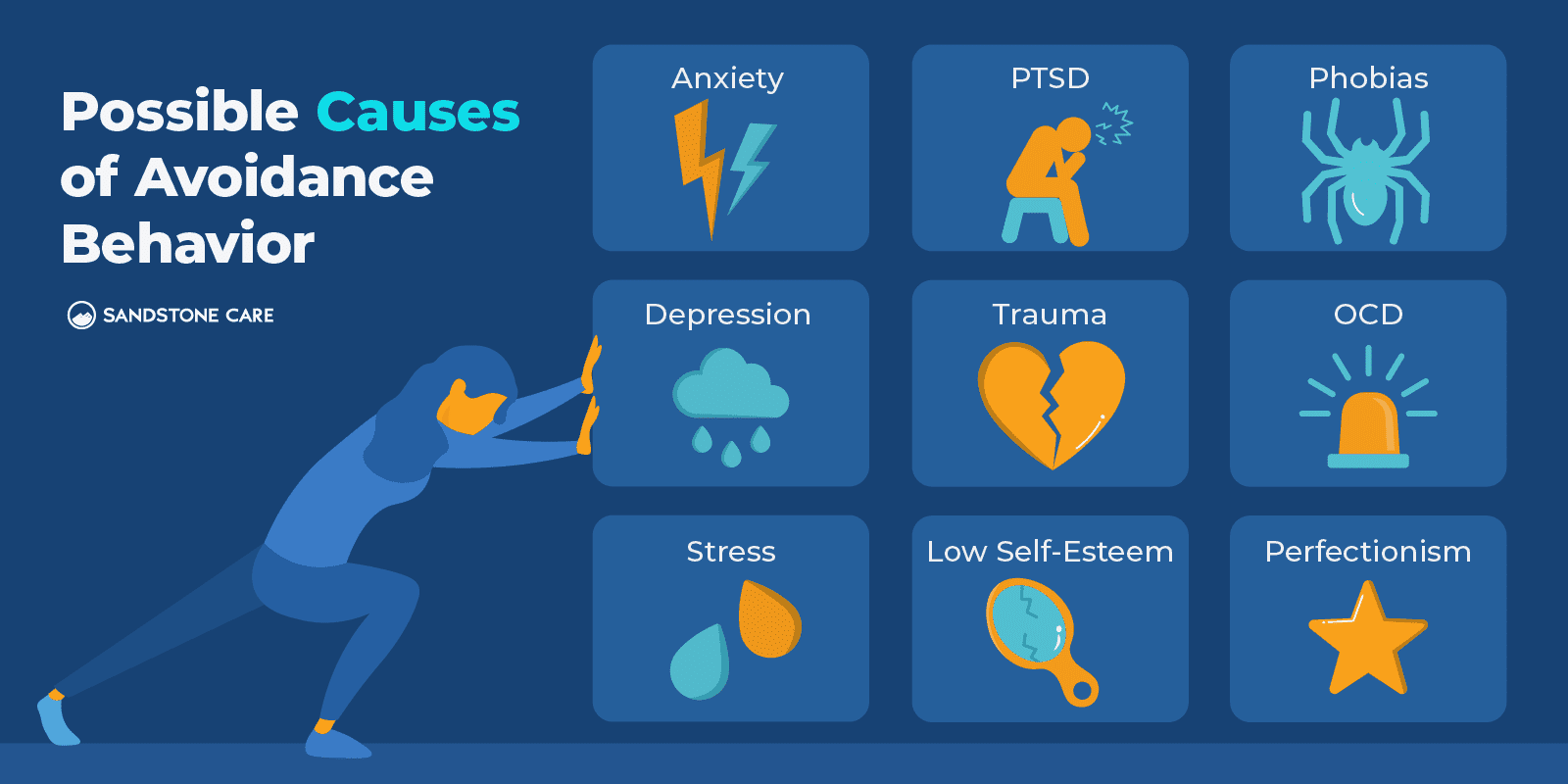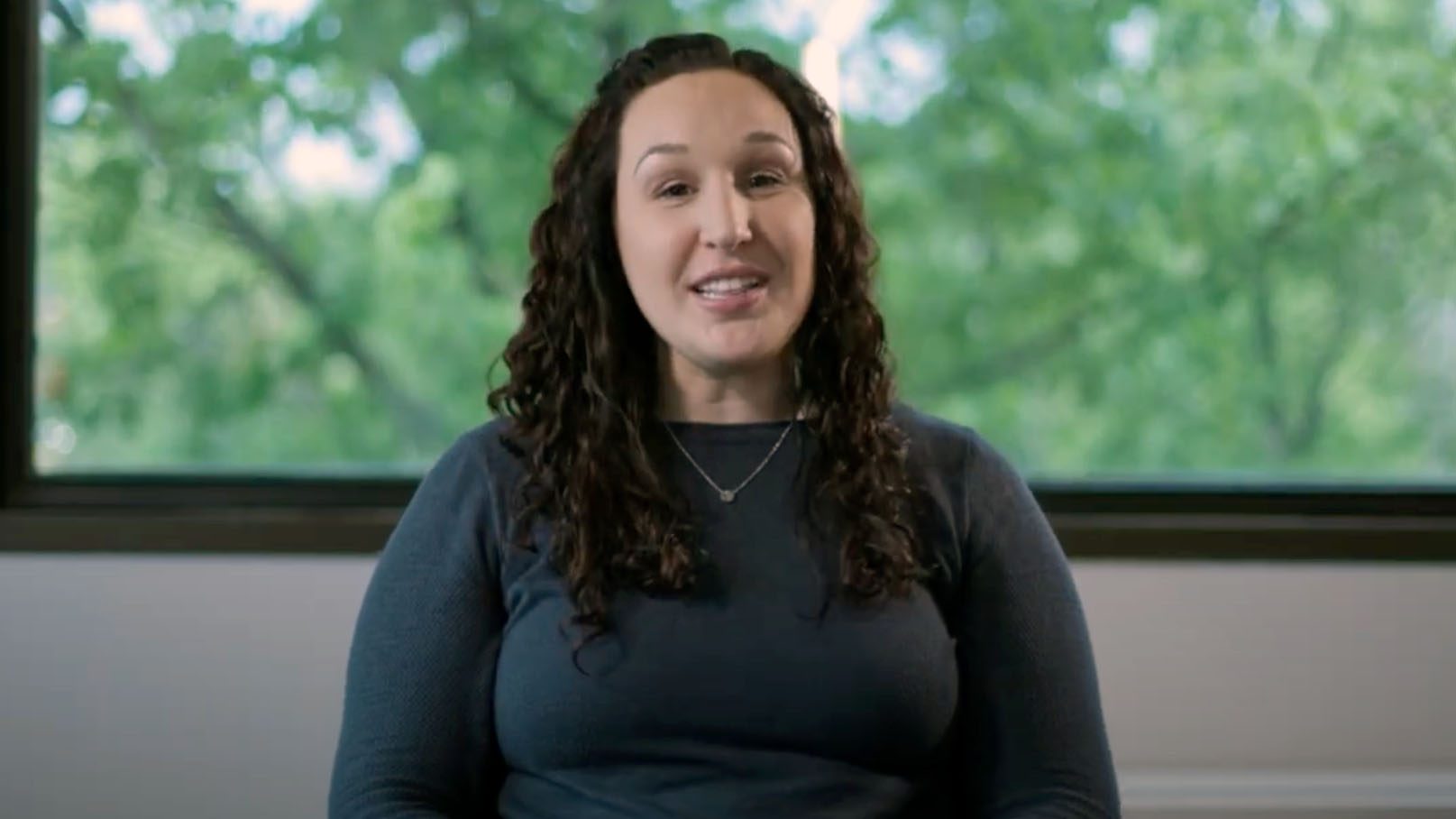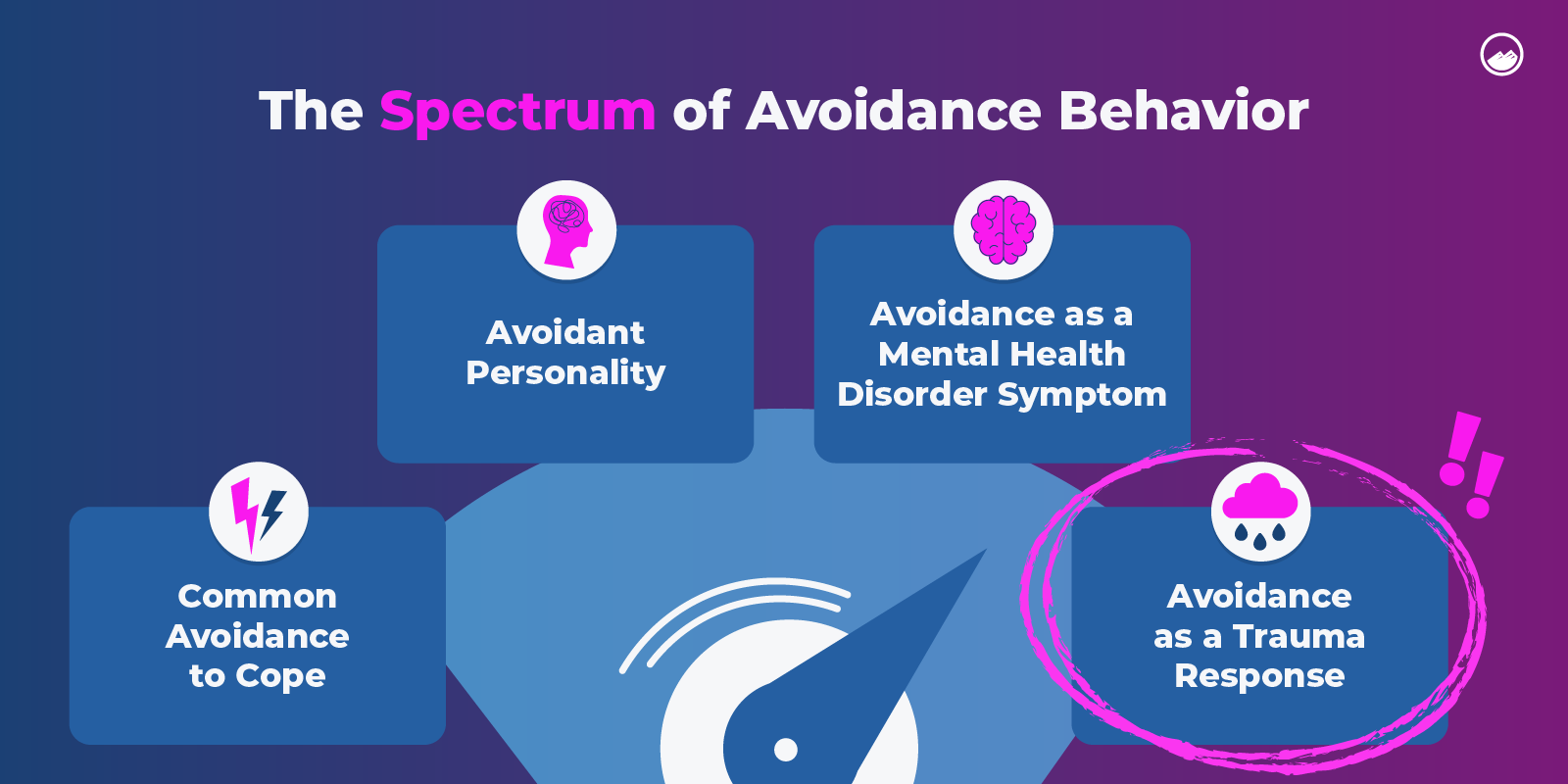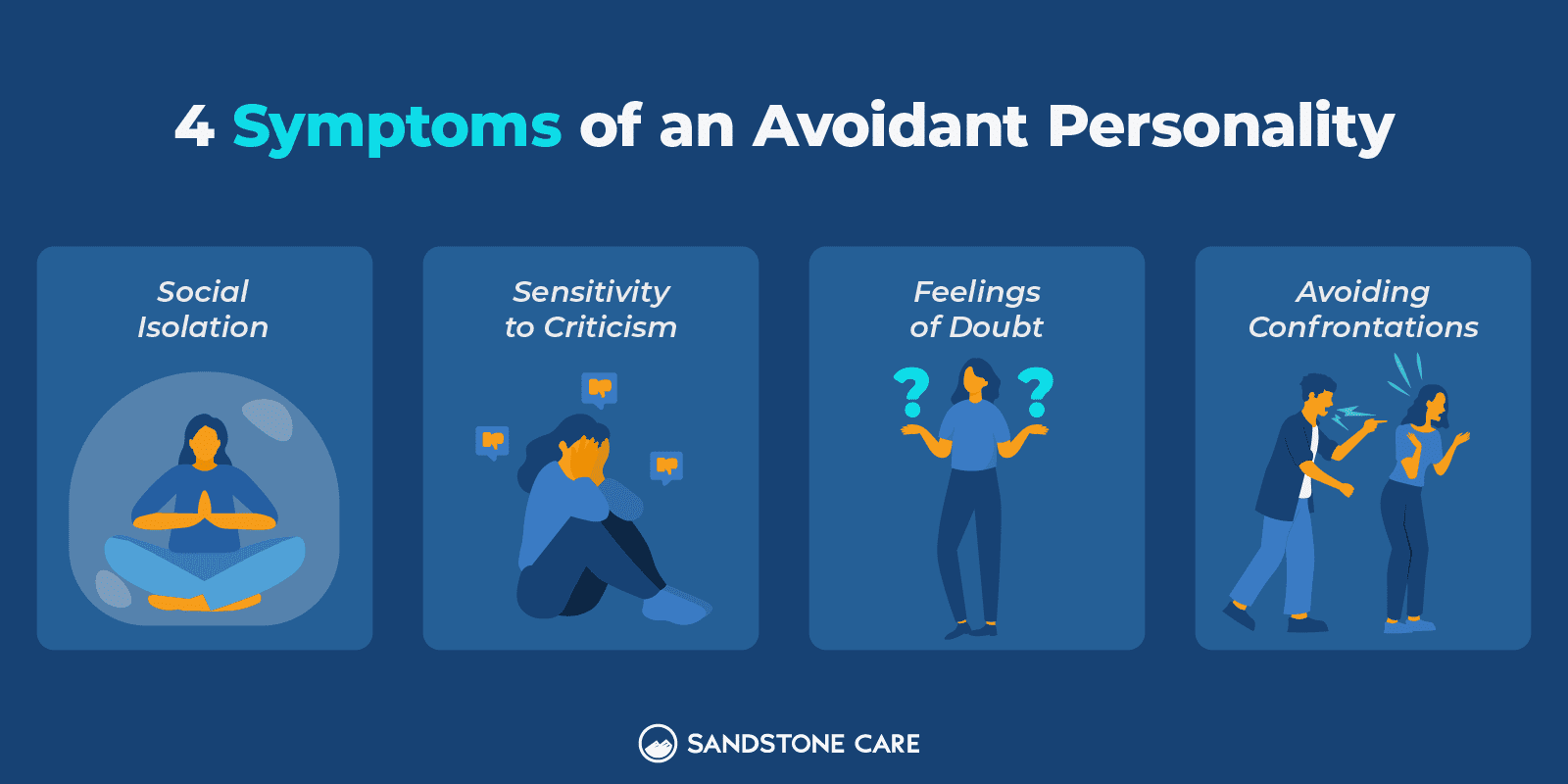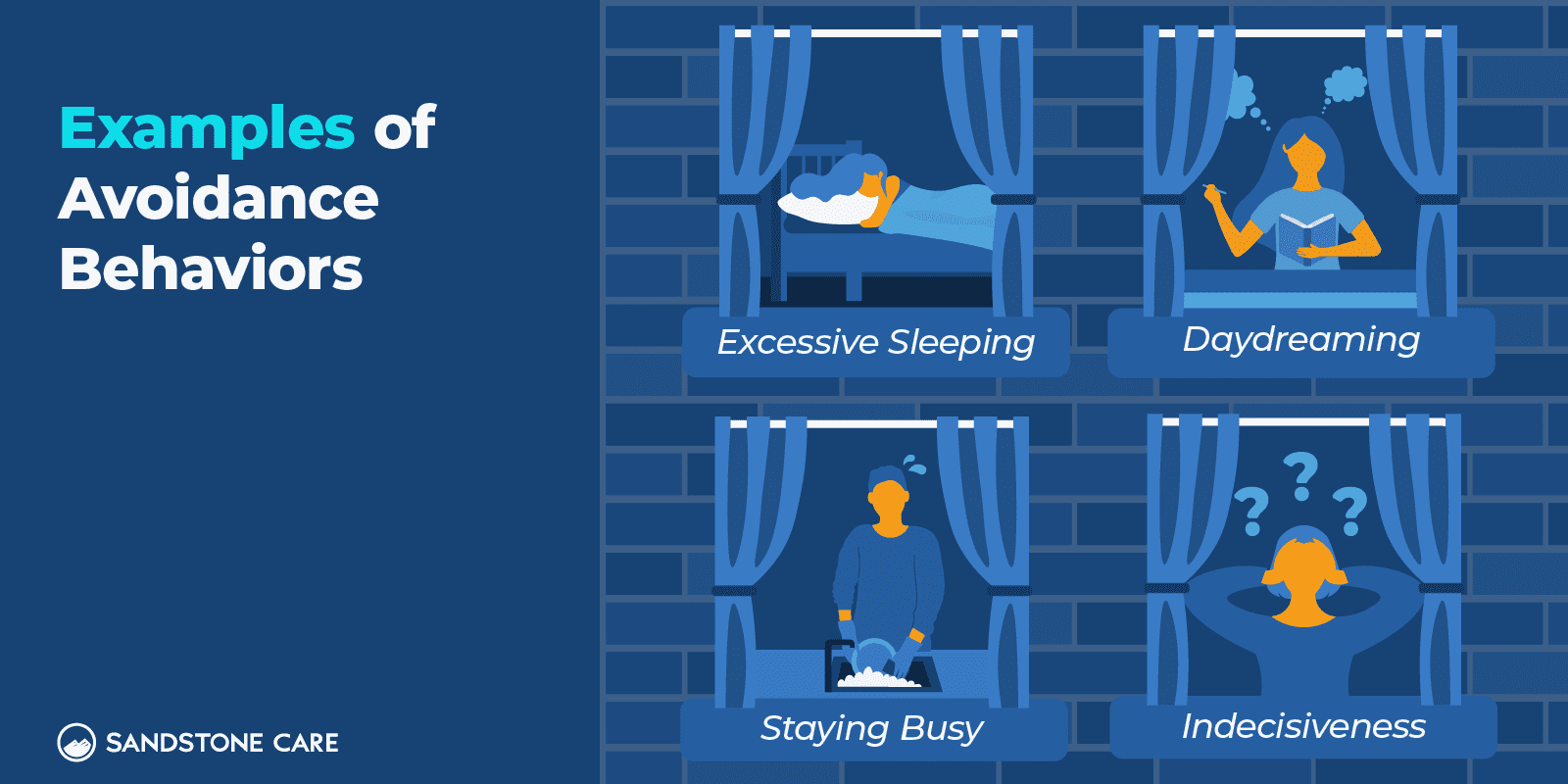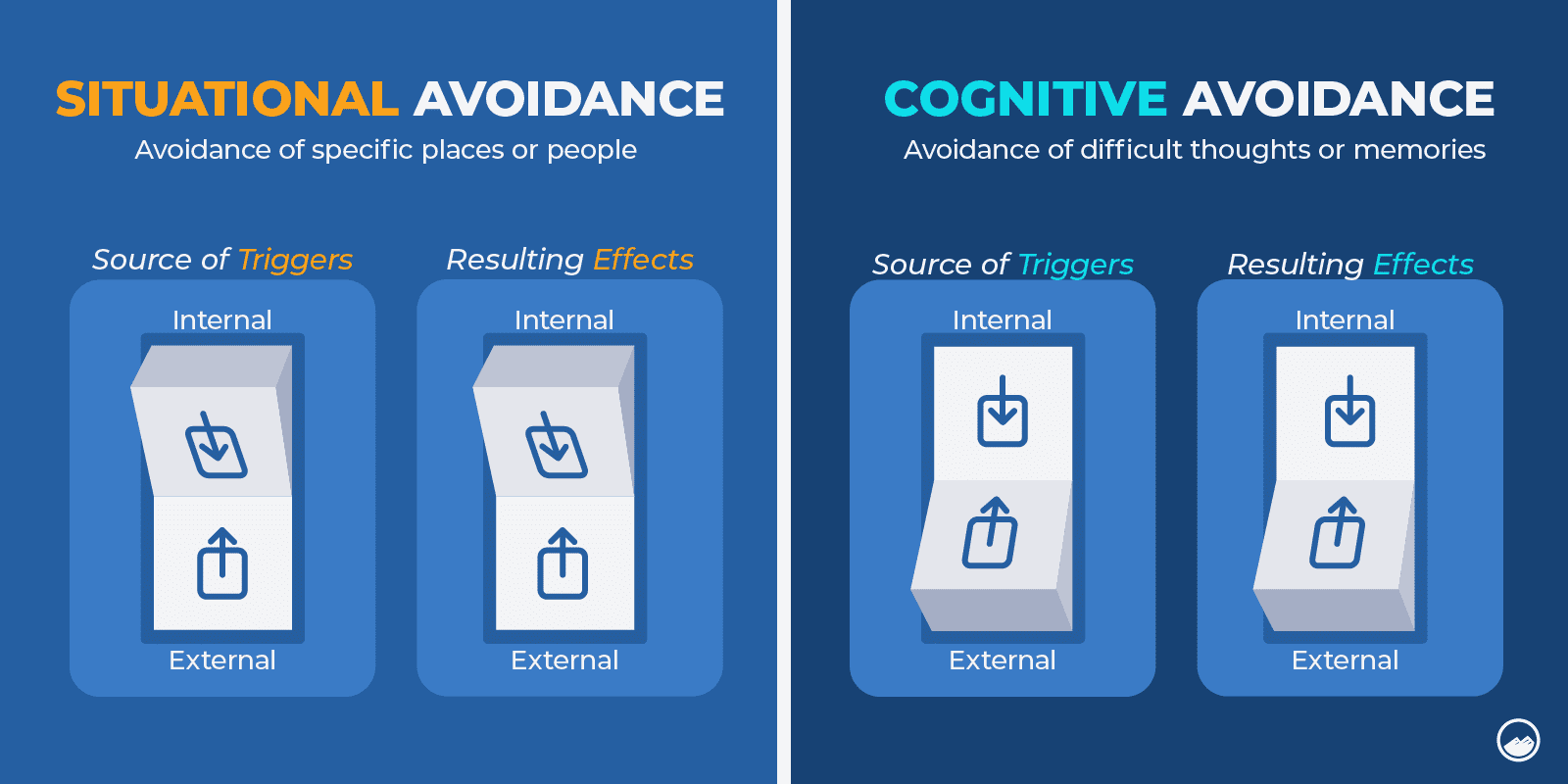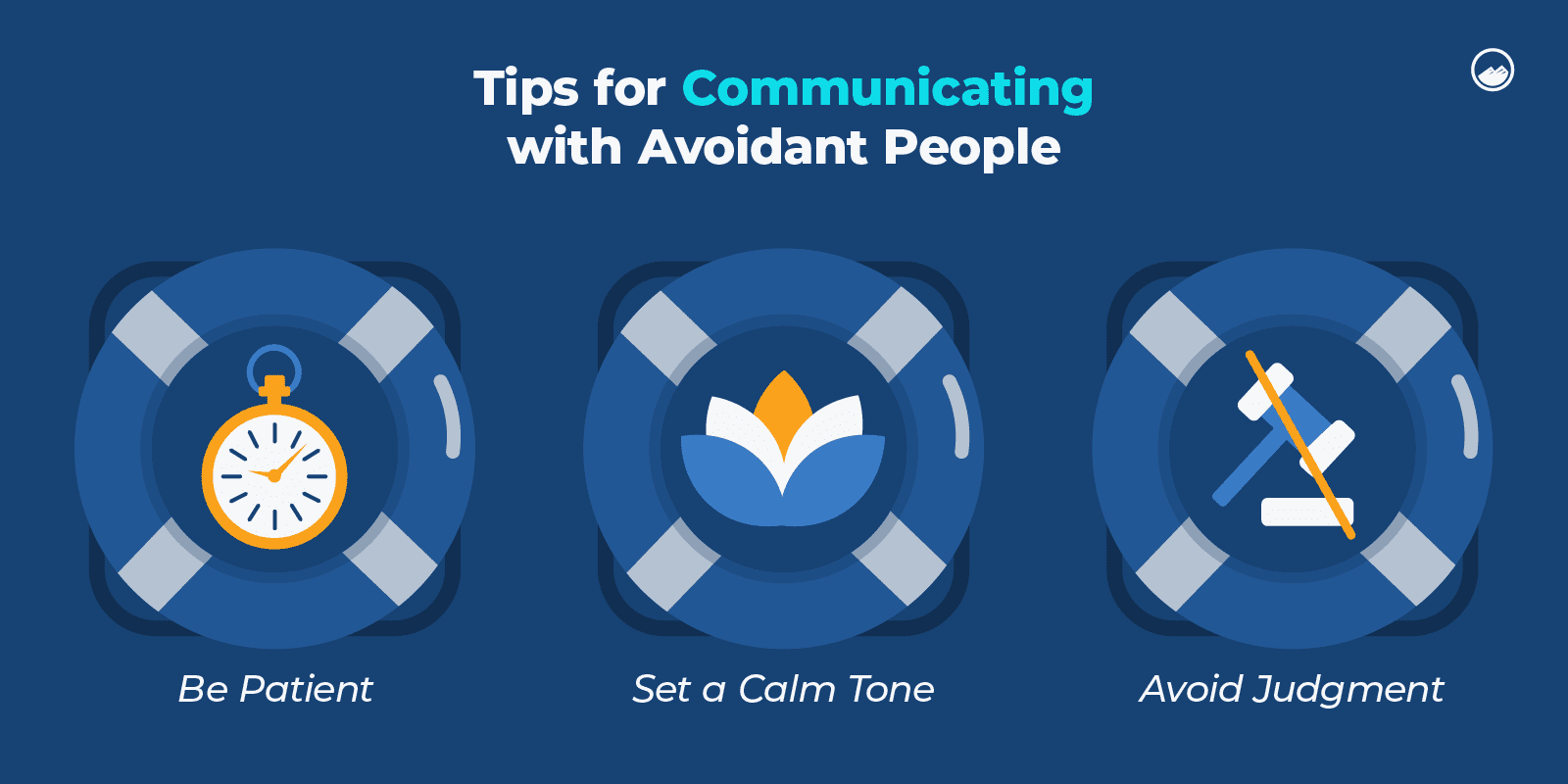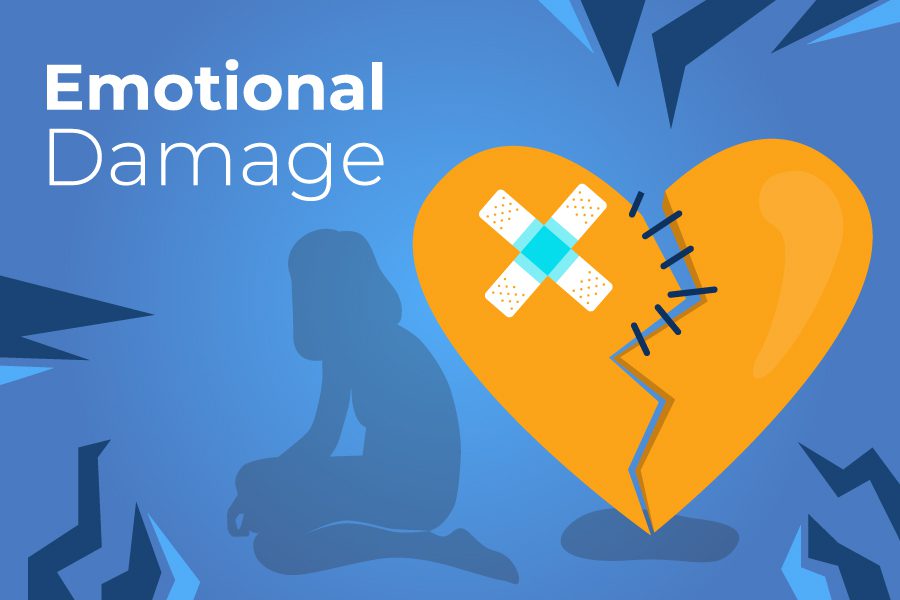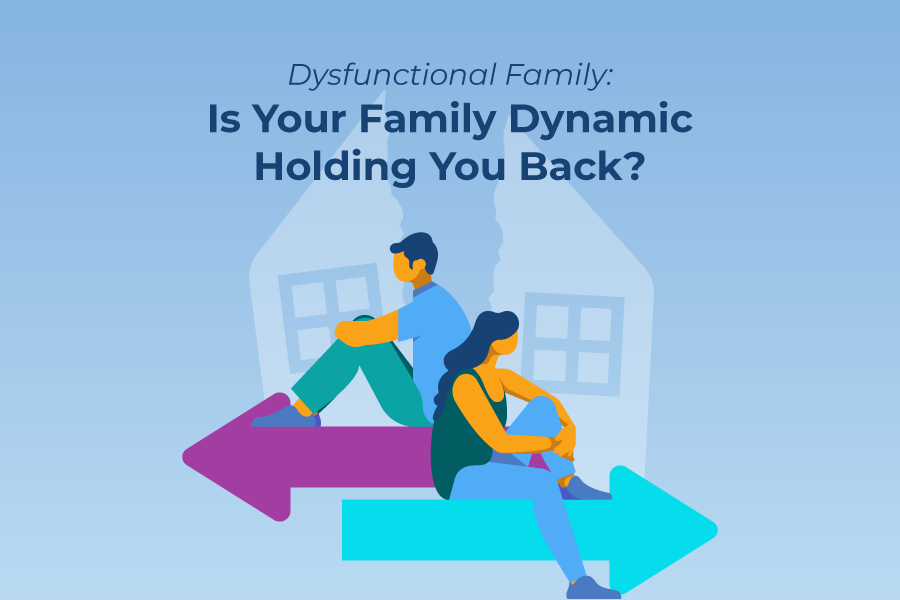Addressing the Negative Effects of Avoidance Behavior
Stress, anxiety, and discomfort can be difficult to cope with, but it’s impossible to avoid stress altogether.
Confronting the sources of stress rather than using avoidance behavior is essential for your mental health.
Exploring avoidance behaviors and understanding their negative effects on mental health can empower you or someone you love to develop coping strategies.
What Is Avoidance Behavior?
Avoidance behavior is a coping mechanism that is used to avoid or ignore difficult feelings, tasks, or conversations.
While avoidance behavior takes a person away from certain stresses, it does not provide coping strategies to emotionally process why they are so challenging.
Why Am I Avoiding Everything?
Avoidance behaviors can be common. It is normal to want to distance oneself from stressful situations, events, places, or even people.
However, understanding why certain situations are so stressful is necessary to address and overcome these feelings.
Some reasons people use avoidance behavior include:
- Fear of failure
- Anxiety or panic
- Past trauma
- Fear of rejection
- Overwhelm or stress
- Lack of confidence
- Low self-esteem
- Perfectionism
- Fear of conflict
- Emotional pain
- Fear of the unknown
- Desire for control
- Difficulty with change
Avoiding these stressors is a short-term solution to feelings of fear, anxiety, and panic.
Trying to ignore things that feel uncomfortable can often lead to the situations worsening, which can increase anxiety and encourage avoiding them even more.
Meeting with professionals to explore avoidance strategies is crucial for breaking this cycle.
What Are Avoidance Behaviors?
Avoidance behaviors are responses to stress that are used to distance someone from the situation, such as ignoring loved ones or procrastinating on projects.
Some may physically avoid stressful situations, people, or environments.
These behaviors can involve removing oneself from social situations and calling out from work. Such avoidance strategy can quickly develop into self-isolation.
Others may emotionally avoid stress. Such avoidance involves not confronting feelings of stress, anxiety, depression, and other mental health needs.
Some may also look to addictive substances to placate the mind and further avoid these feelings. However, this approach can lead to addiction and create a complicated healing journey that demands professional treatment.
Avoidance behaviors are common in those living with anxiety disorders, such as:
- Social anxiety disorder
- Panic disorder
- Post-traumatic stress disorder (PTSD)
These disorders can manifest in anyone who may be dealing with persistent levels of stress.
How Do You Recognize Avoidance?
To recognize avoidance behaviors, it is important to watch out for signs like:
- Disinterest in social functions or feelings of social anxiety
- Difficulty committing to plans or difficulty talking about serious topics or future plans
- Compromised decision-making skills
- Fear of rejection over ideas and opinions
- Procrastination
- Eating disorders
- Substance use
Recognizing these signs can be a reason to contact professionals to explore avoidance behaviors and their effects. Sandstone Care can empower those avoiding difficult situations to explore the causes of their avoidance and develop healthier coping skills.
Is Avoidance a Form of Control?
Yes, avoidance behaviors are a way for those experiencing anxiety or panic disorder to try and control how they feel.
However, this emotional control does little to engage in effective problem-solving. Instead, it leaves the sources of stress and anxiety unfixed. This can actually lead to a loss of control over time.
Is Avoidance Emotional Abuse?
Yes, emotional avoidance can be sometimes be a type of emotional abuse.
This behavior can leave the affected person feeling isolated, rejected, and invalidated, which can have long-term negative effects on their mental and emotional well-being.
Emotional avoidance becomes abusive when it is used consistently to undermine the other person’s sense of self-worth, create dependency, or maintain power in the relationship.
Emotional abuse can come in a variety of forms, such as:
- Compromised communication
- Withholding physical contact
- Being emotionally closed off while a partner needs support
Causes of Avoidant Behavior
Avoidance behaviors can stem from a variety of sources.
Exploring why a person may avoid stressful situations is necessary for comprehensive and effective healing.
What Causes Avoidance Behavior?
Avoidance behaviors can manifest for a variety of reasons such as trauma, anxiety, or fears of failure.
For some, persistent feelings of anxiety or anxiety disorders can inform avoidance behaviors.
These intense feelings of anxiety can be difficult to cope with. It is common for a person to want to avoid situations, people, or even environments where they expect anxiety to manifest.
Others may adopt avoidance behaviors after a traumatic experience that has lasting effects on their mental and physical health.
An individual may begin to avoid similar situations out of fear of repeated traumas.
They may also find that some situations bring back uncomfortable memories or other symptoms of anxiety or panic disorder.
Why Is Avoidance My Coping Mechanism?
A lack of direct coping strategies and self-care can result in avoidance being the only coping strategy to address anxiety.
Anxiety disorders and stress are difficult to manage. For many living with anxiety or panic, avoiding anxiety-provoking situations can seem like the only way to address the situation.
What Is Avoidance Behavior a Symptom of?
Avoidance behaviors can be associated with panic disorders, anxiety disorders, social anxiety, trauma, post-traumatic stress disorder, or obsessive-compulsive disorder (OCD.)
Is Avoidance a Mental Disorder?
Avoidance behaviors can range from an unhealthy coping mechanism to a symptom of a larger mental health disorder.
No matter what level you might be experiencing, professional treatment at Sandstone Care can empower those living with anxiety, depression, panic, trauma, and avoidance to better address and overcome their sources of stress in daily life.
Is Avoidance a Symptom of Anxiety?
Yes, avoidance behaviors are common among those living with anxiety.
It is common to want to avoid situations where an individual believes that they may affect their anxiety levels. However, this is a short-term solution to these stresses. Professionally addressing avoidance behaviors is crucial for effective healing.
How Is Avoidance a Trauma Response?
Avoidance is a common trauma response because it helps prevent the re-experiencing of intense emotions associated with the trauma by steering clear of reminders.
It serves as a way to numb or reduce emotional pain, manage hypervigilance, and avoid sensory triggers that can bring back traumatic memories.
What Trauma Causes Avoidance?
Trauma of any kind can fundamentally change how a person behaves, including causing avoidance.
However, avoiding these stresses can make anxiety worse or worsen symptoms of PTSD.
Avoiding anxiety and trauma instead of addressing it can cause these feelings to build up in a person’s mind.
Avoiding feelings may further affect feelings of anxiety, depression, fear, and more.
Avoidance behaviors are common in those who have lived through:
- Physical or sexual assault
- Emotional abuse
- Natural disasters or violence
- Car accidents
- Military experience
The Effects of Avoidant Behavior
Avoidant behaviors can indicate several other challenges in daily life. Finding a treatment to address avoidant behaviors can empower people to pursue change and develop healthier coping strategies.
What Are Three Symptoms of Avoidant Personality?
The three most common symptoms of an avoidant personality are:
- Social inhibition/social isolation
- Pervasive feelings of inadequacy or doubt
- Intense sensitivity to criticisms or perceived criticisms.
An individual may also avoid situations where they may be open to criticism. This fear can stifle potential hobbies and social outlets.
What Are the Three Consequences of Avoidance?
The three most common consequences of avoidance include worsening feelings of anxiety, low self-esteem, compromised sense of self-worth, and loss of opportunities for personal and professional growth.
Examples of Avoidance Behaviors
Avoidance behaviors can be so ingrained that an individual may not recognize all the forms that avoidance can take.
Educating oneself about avoidance and how it manifests can be the first step toward pursuing change.
What Is an Example of Avoidance In Real Life?
Avoidance behaviors take many forms in real life, including:
- Procrastination
- Cognitive avoidance, such as making jokes regarding difficult topics to distance oneself from mentally confronting them
- Leaving social situations early or being resistant to attend in the first place
- Difficulty tending to professional or academic responsibilities, such as calling out on busy work days or avoiding test days and deadlines
What Are Task Avoidance Behaviors?
Task avoidance behaviors are behaviors that seek to eschew personal responsibilities.
Procrastination, postponing deadlines, ignoring all elements of a task, and employing constant distractions are all task avoidance behaviors.
What Does Emotional Avoidance Look Like?
Emotional avoidance can be shutting oneself off from emotional availability.
Deterioration of communication with friends, family, and partners, decreased interest in others, and self-isolation are all common. Emotional avoidance can also be avoiding difficult conversations, either through deflection, employing jokes, or other distractions.
Types of Avoidance Behavior
Even those who employ avoidance behaviors may do so differently. Professional treatment at Sandstone Care can empower people to explore how their unique method of avoiding stress, anxiety, and more may affect their daily life.
What Are the Two Types of Avoidance?
The two main types of avoidance behaviors are situational avoidance and cognitive avoidance.
Situational avoidance is the physical avoidance of certain spaces, people, environments, or situations.
Individuals may avoid putting themselves in specific situations, such as:
- Avoiding social gatherings
- Driving a road where they were in a car accident
- Being with certain people
Cognitive avoidance, however, is the avoidance of difficult thoughts or memories.
An individual may use humor, addictive substances, or other distractions to avoid confronting difficult thoughts.
However, doing so does not help address and resolve their core needs and stresses.
What Is Demand Avoidance?
Demand avoidance is the directed and intentional avoiding of anything perceived as demand.
This form of avoidance is common among those living with OCD or who feel stressed about being a perfectionist.
Not only does this kind of avoidance prevent an individual from doing things for others, but it can deny oneself beneficial practices.
What Is Uncertainty Avoidance?
Uncertainty avoidance is avoiding situations where outcomes are unclear. It also occurs when an individual may have limited control over the outcome.
Feelings of anxiety, doubt, and more are common in this form of avoidance. An individual may avoid taking risks if they are unsure of the result.
This response can make personal and professional development difficult, as well as cause social anxiety.
What Is Emotional Avoidance?
Emotional avoidance occurs when an individual attempts to minimize the emotional effects of past traumas and difficult thoughts and memories.
An individual may ignore uncomfortable feelings and negative thoughts, deny them, or otherwise leave them unprocessed.
What Is Harm Avoidance?
Harm avoidance is a trait where a person may put in a lot of effort to avoid perceived harm. Such harm may involve emotional, physical, or social issues.
Anxiety, intense worry, pessimism, and catastrophizing potential outcomes are all common.
Therefore, an individual may worry about potential extreme outcomes even when they are unrealistic.
How to Overcome Avoidance Behavior
Identifying and overcoming avoidance behavior can be difficult. Professional treatment and guidance are necessary to address and overcome its effects.
How Do You Fix Avoidance Behavior?
Mental health professionals are necessary for effectively identifying and challenging avoidance behaviors. They will help individuals manage the beliefs, stresses, and anxieties that inform them.
A combination of professional treatment, cognitive-behavioral therapy, psychotherapy, and self-care is essential for an effective and comprehensive healing journey.
How Do You Break the Cycle of Avoidance?
Breaking the cycle of avoidance is difficult, and it can take time to adopt new coping strategies and perspectives.
Identifying the stresses behind avoidance empowers those navigating healing from avoidance behaviors to confront the challenges ahead for effective healing.
How To Help Someone With Avoidance Behavior
Helping those exhibiting avoidance behaviors can be challenging, but there are ways to support loved ones in their healing journey.
Setting strict schedules, developing listening and communication strategies, validating their feelings, and being patient are all elements of effective support.
How Do You Communicate With People Who Use Avoidance?
Communicating with those avoiding difficult conversations, mental states, and situations can be difficult. Some skills that can help include:
- Being patient
- Setting a calm tone
- Asking direct and specific questions rather than open-ended queries
- Listening
- Validating their fears and avoiding judgement
How to Handle Children With Avoidant Behavior
Addressing avoidance in children can be challenging, but some techniques that are proven to help include:
- Treating children with respect
- Modeling effective communication skills
- Using exposure therapies alongside professionals and in safe and curated environments
- Practicing positive reinforcement
- Participating in family and individual therapy


